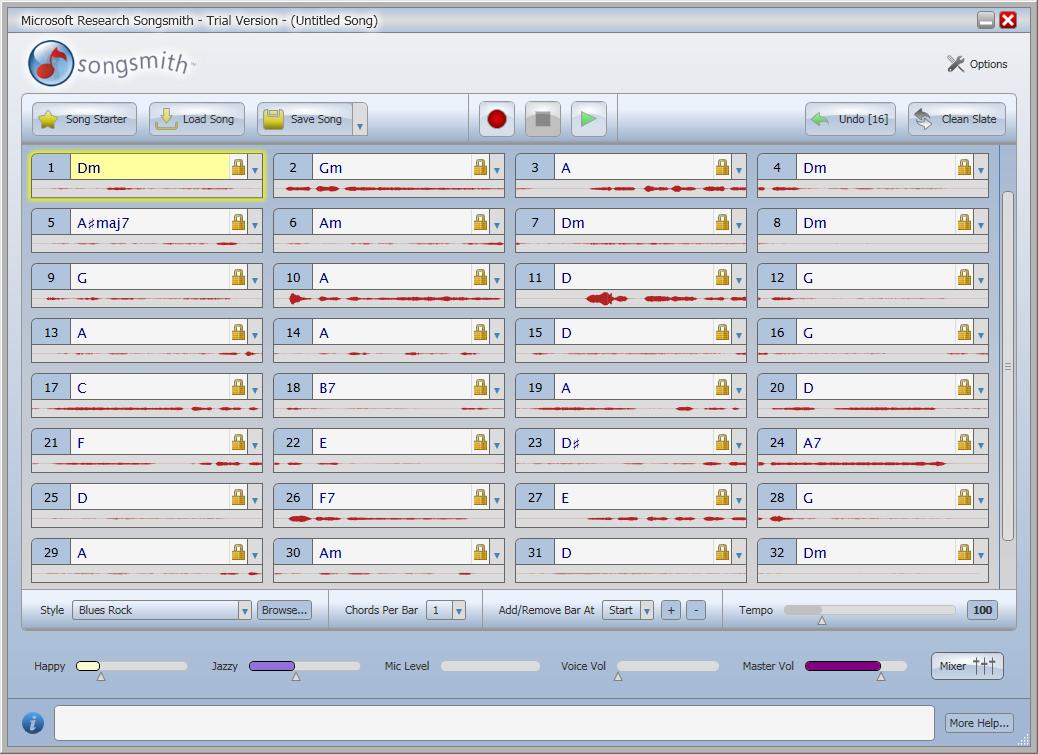Microsoft Songsmith
fakalin pointed me to this product from MSR. I was actually sort of aware of this during my stint at MSR, via overheard hallway conversations, but didn’t know it was going to be released as a product.
http://research.microsoft.com/en-us/um/redmond/projects/songsmith/
So I downloaded it to see what’s up. It has been called the reverse Karaoke program. It has only been released a month and it appears there are already a handful of parodies of well known songs. There is one that turned a rap by Eminem into bluegrass (stupid vulgar song, but anyway):
http://www.youtube.com/watch?v=2ScVTBg2vxk
Some people hate the program, likening it to Bob, probably because most of the rearrangements are terrible. But that misses the point of how the program is to be used. Obviously, if you just let the algorithm determine the answer without any intervention, it is too unconstrained a problem to give you any exciting solution. You need some user intervention, as that Eminem example clearly employed (did you think Songsmith by itself would give you that? of course not…)
The strength of the program is actually in the new paradigm it introduces for transcribing rough musical ideas. I have a beef with pretty much all of the music notation software out there. Not only are they slower to notate than by hand (unless there is MIDI input attached — still unnatural), but they don’t fundamentally take advantage of the fact that there is a computer there with a huge amount of potential intelligence, at all. Imagine if your word processor software just showed a picture of a typewriter and you click on each key on the screen to write a document all in Courier, or a spreadsheet program that had no formulas or autoformatting. That’s pretty much the state of music notation software these days. They are “dumb” programs in every sense of the word. (Audio editing programs tend to be a lot more advanced, with non-linear editing and tracks, etc., but they deal in unnecessarily unwieldy “samples” and “loops”.)
Songsmith hardly resolves my complaints (because its audience is too different) but it does move in the right direction. For example:
* There is beginning to be the notion of hierarchy, where the “style” choice determines patterns and motifs and the legal chords and legal chord progressions. And the entire “style” can be swapped out.
* Chord becomes a critical input unit that can actually be assigned, edited, and played back as a unit (rather than as merely a collection of notes)
* Pitch detection and harmony inference. (Much better than the crap that is built into Finale, btw.)
* Algorithmic determination of music paths based on rules — this is sort of a crutch like autocorrect, but for drafting it is helpful if only because it saves time.
* Ability to assign constraints and alter paths, as well as to remove constraints.
* Dynamic playback, where every time the thing is played back, the expression is not exactly the same.
None of these are fully developed in Songsmith but if the development goes on, perhaps there will be something really good yet. Already, it makes many mechanical things easy. The easiest of all is to transcribe existing music, as well as to make new arrangements (with a little user intervention).
Here’s an example. There’s a classic Cantonese song called 天才白痴往日情 (“genius, idiot, and nostalgia”). Here’s one version
http://www.youtube.com/watch?v=T7FiQFsHzxs
This song is AABA, with A and B each 8 bars, so in Songsmith, I put in the original chords in the first 8 bars, but then let it run loose on the rest with variations. After adjustments and incrementally locking down “finished” chords, here’s one result (transposed to a different key, sorry…):

